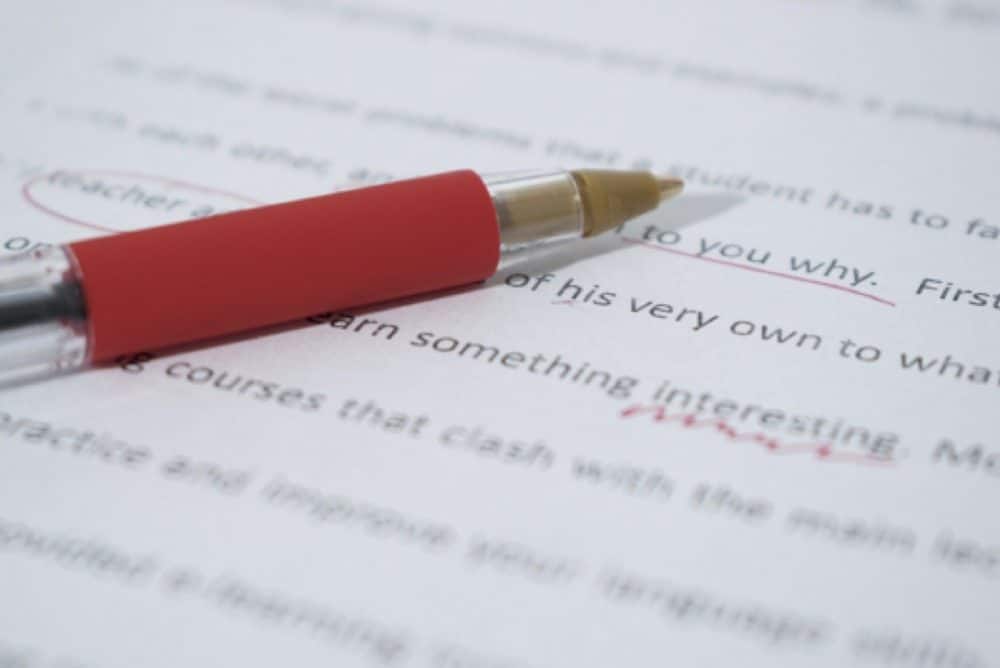Are you concerned about writing a plagiarism-free paper? Not sure how to detect plagiarism in your paper, and how the examiners do it? Well, we’ve put together five ways to check a paper for plagiarism. Knowing these five ways is sure to help you craft a unique paper.
If you really want to plagiarise though, you could always check out a cheap essay service. The option is there.
Featured Image VIA
Looking For Warning Signs In The Grammar
Every student has a unique writing style. This style is easily identifiable by the reader. The use of complex sentences, choice of words, tone, and punctuation make up the writer’s voice. Therefore, the teacher or examiner can easily tell if the same person writes the entire piece or not. When there is a shift in composition style, doubts. It is almost impossible for an individual to have different writing styles in one write-up. Hence, when suddenly the composition changes, the examiner doubts if this entire piece is one writer’s composition. A wide range of academic assignments includes a plural first person. Abrupt changes in the work may look unusual. Therefore, always ensure you avoid any register move. Otherwise, it can land you in great trouble. Always evaluate your writing before submitting or ask someone to read and give feedback. Make sure your language and tenses are consistent throughout the document. These grammar warning signs are a red flag for the reader. And, it is way easy for the examiner to catch these red flags. Thereby, never even try to learn an essay for an exam. If you’re wondering how to write no plagiarism essays, you may take online help.
Look For Multiple Citation Styles
Using different citation styles or the absence of citation is an undeniable case of plagiarism. Students who take content from other sources without rephrasing and adding their thoughts forget to cite it correctly. They may be required to use APA style, but if the source has used Harvard, they may copy-paste the same. Also, sometimes, they take content from unknown online sources and don’t know how to cite them. They then skip the citation of a particular chunk altogether. This entire thing makes it easy for the professor to detect plagiarism. There is no way you can hide plagiarized work. Thus, always ensure you are writing an essay without plagiarism. Remember that improper citation involves plagiarism. When the citation styles change within the document, it is natural that you’re using copied content. Always make sure you’ve added a citation to an idea or wording that’s not your own. A proper citation includes:
- Author name.
- Published date.
- Page number.
Later in the bibliography, you’d also have to give full reference to this source. And, this should be done following the style guide you’re required to use. If you’re using the exact source’s words in your work, use quotation marks around those words to indicate these are not your words. Also, remember to put the page number when quoting someone’s words directly. Besides, if this quote is used in another source, do mention the source you’re taking it from. So, if you’ve been wondering how to avoid plagiarism, this is one of the crucial tips to follow.
Notice Other Format Changes
Noticing formatting changes is a crucial way to detect plagiarism. Teachers and examiners pay special attention to the sudden alterations in style, size, type, and color of the font. When someone copies a text and pastes it to their document, often, it is not pasted in the same format. The shade of the font may be lighter or darker; the size may be slightly bigger or smaller; the line spacing may be different. All these changes in one document induce suspicion. It may sound stupid, but students make these silly errors when plagiarizing content. So, always proofread your paper and ensure you haven’t forgotten to remove any text you copied just for your reference. If you forget to do so, you will land in great trouble. Your teacher or examiner will notice any change in formatting or writing (small or big) in a second.
Use A Plagiarism Checker

When you do your research before writing, some sentences may stick in your head that you unintentionally use in your writing. Not only this, you may forget to cite them or forget where you read them. So, when in doubt, always use an online plagiarism checker. It helps you catch all of these issues before you submit your paper. There are several plagiarism checkers available online, such as:
- Grammarly: It is free to run on your document. However, when you’re done running it, you’re prompted to sign up for a 7-day free trial.
- Copyscape: It is also free to use. However, if you want comprehensive results, you can buy the premium version. In the premium version, you need to pay 5 cents per page. Checking your content on this tool is pretty simple. You copy and paste your URL or content in the given box, within a few seconds, the tools come up with the results.
- Turnitin: This tool is geared towards professionals. It is generally for educational institutions that wish to have an account for teachers and students. The institution has to get a quote for a membership. And, since Turnitin is one of the best plagiarism detectors, several institutions rely on its results. However, the cost of this tool may not be worth it if you have to use it for several projects and you’re pretty sure your work is original.
These tools can be extremely helpful in avoiding even the tiniest bit of plagiarism.
Use a Paraphrase To Avoid Plagiarism
If you want to write a paper without plagiarism, ensure you paraphrase everything you have read during your research. Paraphrasing means rewriting the information in your source without changing the meaning. You may also add your ideas to it, but the central meaning remains the same. But, it doesn’t give you the right to own the idea. You are required to cite this information, even if it’s in your own words. However, when paraphrasing, you need to be careful. Often, paraphrasing slips into plagiarism. Students use the same sentence structure while replacing certain words with synonyms. And, when their content is checked on a plagiarism-checker, it indicates all the copied text.
Paraphrasing the text successfully without slipping into plagiarism employs a dash of dance. Try to avoid using similar phrases or words used in the source. Reword every sentence. You may also split one sentence into two sentences. The key is to reword without changing the original idea. And, remember that idea needs to have an attribution.
These suggestions are sure to help you become more aware of how you can be involved in plagiarizing without realizing it. In addition to this, crafting a unique piece takes daily practice and effort. So, keep practicing while keeping the above information in mind.















